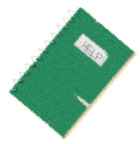6) Maintenance

|
6) Maintenance |
 |
Whilst there are exceptions, most empty houses are old, and often their essential facilities are in want of repair. In most cases, however, the problems aren’t very big and you will find that you can do them yourself without having to pay tradespeople to do it for you.
General d.i.y Plumbing
Broken Copper Pipes
Make sure that the water mains are turned off. Broken or cracked water piping (most houses have copper) can be cut and repaired. To go about it, cut out the cracked section with a hacksaw [see diagram one]. Then get a piece of garden hose and two hose-clips to ensure that there are no leaks. Get the right sized hose-clips to fit the hose to the pipe. Put the clips in the centre of the hose piece, then slip the copper pipe into one end and out the other [see diagram two]. To finish up, place the clips on either side of the hose and tighten the clips with the right screwdriver [see diagram three].
Cracked PVC Pipes
Cracked and/or leaking pipes are very easy to repair. If you have cracks in bends – ie, traps under sinks or basins – take to it with leak sealant. When using a sealant, ensure that the surface is dry for better and longer sealing. If it is a straight section of pipe, get some duct tape and secure it tightly around the pipe so that there are no air bubbles. Again, there has to be a dry surface for better sealing.
Leaking Taps
There are generally two problems with leaky taps :
If the tap is leaking while it is off, then the problem is in the spindle [see diagram one]. Tap leakages of this kind are generally caused by old or deteriorated washers. Usually, only a shifting spanner is needed to change tap washers. Some old taps can be badly corroded. If so, the use of some kind of spray lubricant can make all the difference.
To change the washer :
1) Make sure that the water is turned
off at the mains
2) Remove the tap handle. Sometimes there is a ‘button’ on the handle
that conceals a screw. If so, prise the ‘button’ off and unscrew the
screw. The handle should then come off with a bit of a pull.
3) Remove the spindle. Once the handle has been removed you will be able to
see the end of the spindle surrounded by a flange. The flange will be sitting
flat against the tiles or the basin. The flange can be removed by simply unscrewing
it anti-clockwise. With the flange removed, you will be able to more fully see
the spindle. The spindle can then be removed by securing and turning the shifting
spanner around the spindle’s hexagonal base.
4) Replace the tap washer. The tap washer – which is located inside the
spindle – will have been pushed against a ‘seat’ in order to
make a water-tight seal. Using your finger, feel the ‘seat’ for grooves
or nicks that could cause a leak. Put in a new washer, making sure that the
spindle is turned open so as not to squash the washer. When screwing the spindle
back into the tap, reverse the procedure described in step (3).
If the tap is leaking at the joining of the lever then :
Make sure that the water is turned
off at the mains.
Unscrew the lever anti-clockwise with a wrench or shifting spanner.
Wrap some teflon tape tightly around the worn thread a number of times to prevent
further leakage.
Screw the lever back on clockwise.
Roof Leaks
Most roof leaks can be repaired with tube silicone in a gun.
 |
 Services Services |
Squatter's Handbook | Sydney Situation | unReal Estate | Links | Home | Contact SHAC